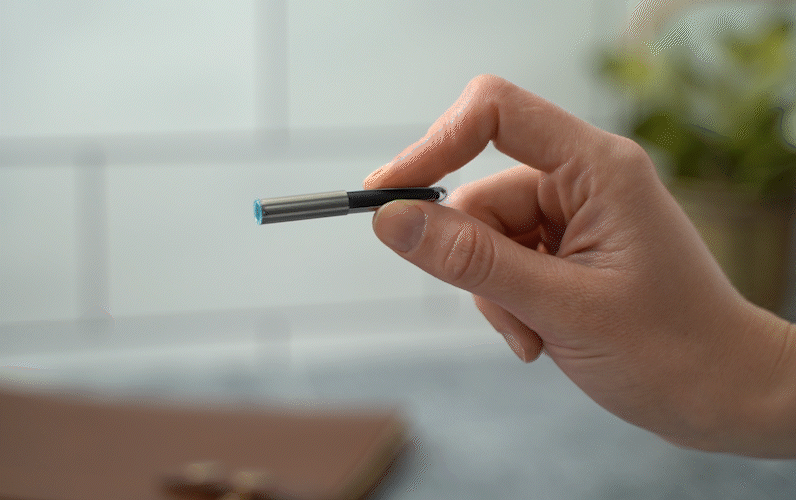What is a Fountain Pen Converter

What is a Fountain Pen Converter
One of the most important features of a fountain pen is the converter inside the pen. It is the reservoir that not only contains the fountain pen ink, but also allows the ink to be refilled inside the pen.
Today, I will walk you through the most common types of fountain pen converters.
A fountain pen converter works by reloading your favorite type of fountain pen ink directly from an ink bottle. Think of it as a little refillable tank inside your fountain pen, similar to the gas tank in your car.
How Do Fountain Pen Converters Work?
Converters operate through suction to draw ink from a bottle into the reservoir. When you squeeze or twist one end of the converter, this creates a vacuum which pulls ink through the nib and feed into the converter.

Once the converter is full, it acts as the reservoir that supplies the nib with ink. And when the converter runs dry, simply refill it to continue writing.
Types of Fountain Pen Converters
To cater to different preferences, fountain pen converters come in various types such as:
Squeeze Converters
These converters rely on squeezing action to work. Pinching the end pushes air out, while releasing it creates a vacuum that draws ink into the reservoir.

Piston Converters
Piston converters feature a knob at one end and a piston on the other. Twisting the knob pulls the piston upwards, creating a vacuum and so pulling ink into the converter.

Plunger Converters
A variant of the piston, plunger converters work by manually pushing the plunger downwards then upwards to draw ink into the pen.

Push Button Converters
These converters need you to push a button to create pressure inside the reservoir. Once you release the button, ink fills the pen reservoir.
Are Fountain Pen Converters Better Than Fountain Pen Cartridges?
Ultimately, yes. They are.
Cartridges may be convenient and easy to refill, but they have a little scope of color varieties, and they are not very cost effective.
Converters, on the other hand, offer an almost unlimited amount of different fountain ink types (neon, shimmering, bulletproof, colors galore…)
And, they are also cheaper by ounce than cartridges so you pay more upfront than the cartridges, but way less in the long run.
I should say the downside of converters is that refilling can be a messy process.
Which Fountain Pen Converter Should You Use?
If you’re new to converters, the numerous options out there can be a bit daunting. However, it’s easier when you view them in their two broad categories:
- Proprietary
- Universal
Proprietary converters are designed for specific brands of fountain pens. The manufacturers who make such converters usually also produce the compatible pens.
Examples of proprietary fountain pen converters include Waterman, LAMY, Pilot, and Namiki.
In contrast, universal converters fit various fountain pen brands. They have standard fittings and dimensions that allow them to fit into most fountain pens that accept converters.
For users with multiple fountain pens or who switch between pens or inks often, universal converters are a fantastic choice.
Kaweco, Dayspring Pens, Caran d'Ache and Visconti are a few of the manufacturers who make universal converters.
Bonus Tip: Need detailed information on fountain pen refills? Check out our comprehensive PDF guide.
How to Use and Clean a Fountain Pen Converter
Loading a converter into your fountain pen can seem tricky, especially if you’re used to cartridges which are easy to replace. However, after doing it a few times you’ll get the hang of it.
When loading the converter, follow these steps:
- Make sure the converter is firmly snapped into place inside the barrel of the pen.
- Immerse the fountain pen nib into an ink bottle, submerging it up past the feed.
- Engage the converter to fill it with ink.
- Wipe any excess ink off the nib of the pen.
- Screw the barrel firmly in place then test the pen to ensure the ink is flowing properly.
It’s important to clean the fountain pen converter regularly to keep it in great working condition.
Place the nib in a glass of water up to the top of the feed and engage the filling mechanism repeatedly. Continue pulling water in and out of the converter through the nib, changing out the dyed water for fresh regularly, until the water comes out clean.
For dried ink in a pen that has not been used in a while, soak the converter in a bowl of water for about one hour and all the ink will be washed out.
Place the converter facing downwards on a clean paper towel to dry.
Conclusion
Fountain pen converters are a better alternative to cartridges for those looking for sustainable, longer lasting, and cost-effective refills for their fountain pens.
They are easy to use and give a flexibility unparalleled in the writing world.
What is your favorite fountain pen ink converter to use? Leave a comment below!
|
Sam Di Nardo is an author for Dayspring Pens, where she has honed her expertise in ballpoint, rollerball, gel and fountain pens since joining the team in 2018. From her initial role as an Engraver to becoming the Production Manager, Sam's journey has been marked by her passion for the history, manufacturing, and the unique value of gifted writing instruments. A graduate of Regent University with a degree in English Literature and a special interest in Old Norse literature, dive deeper into Sam's world and discover why she's your trusted guide in the realm of gift pens. |





